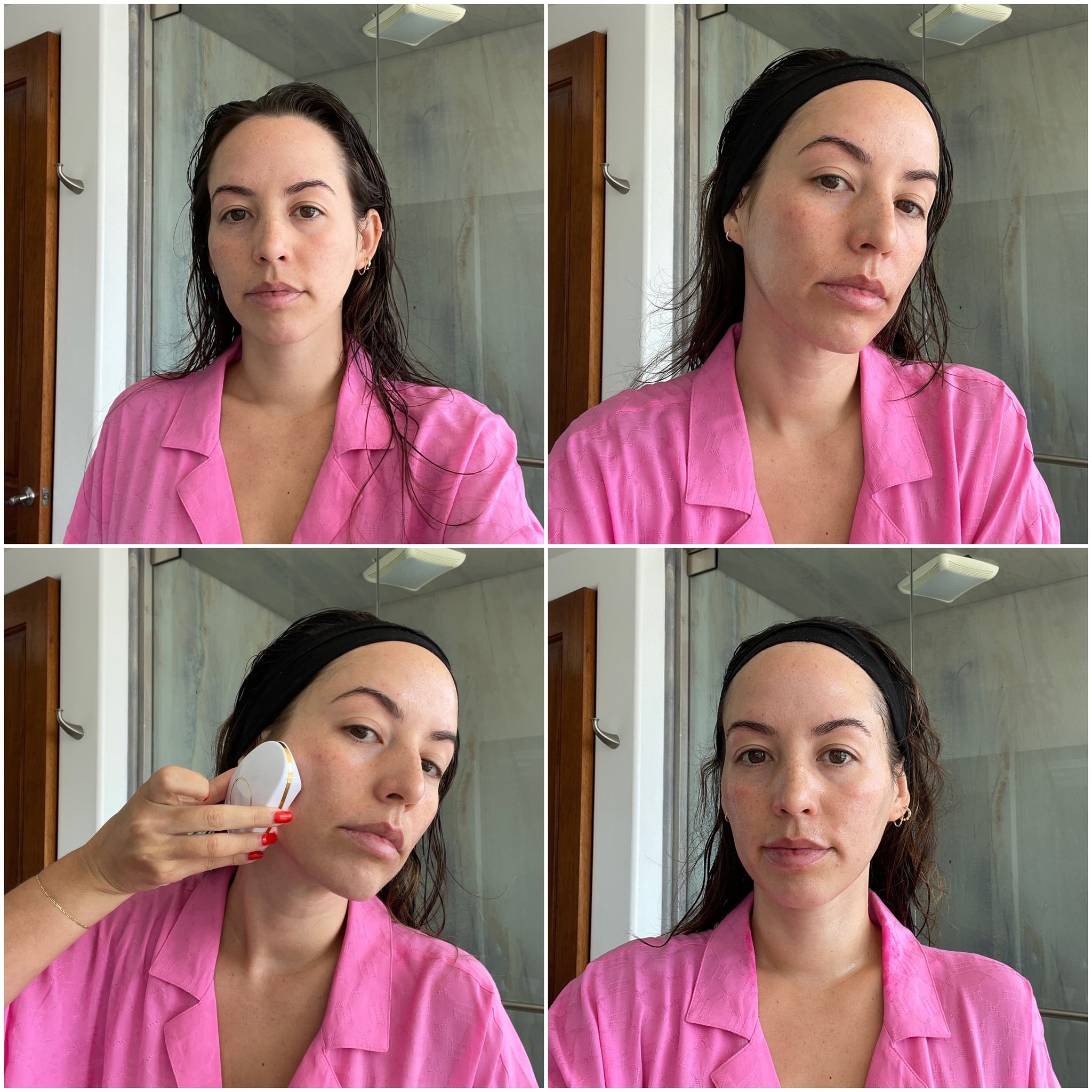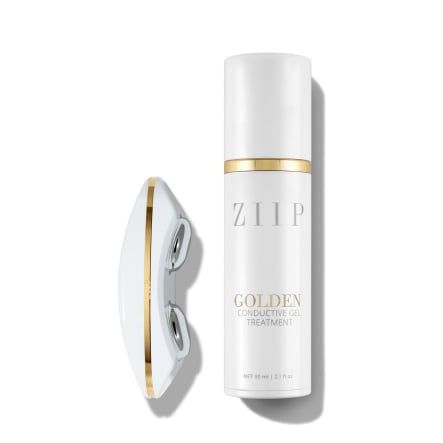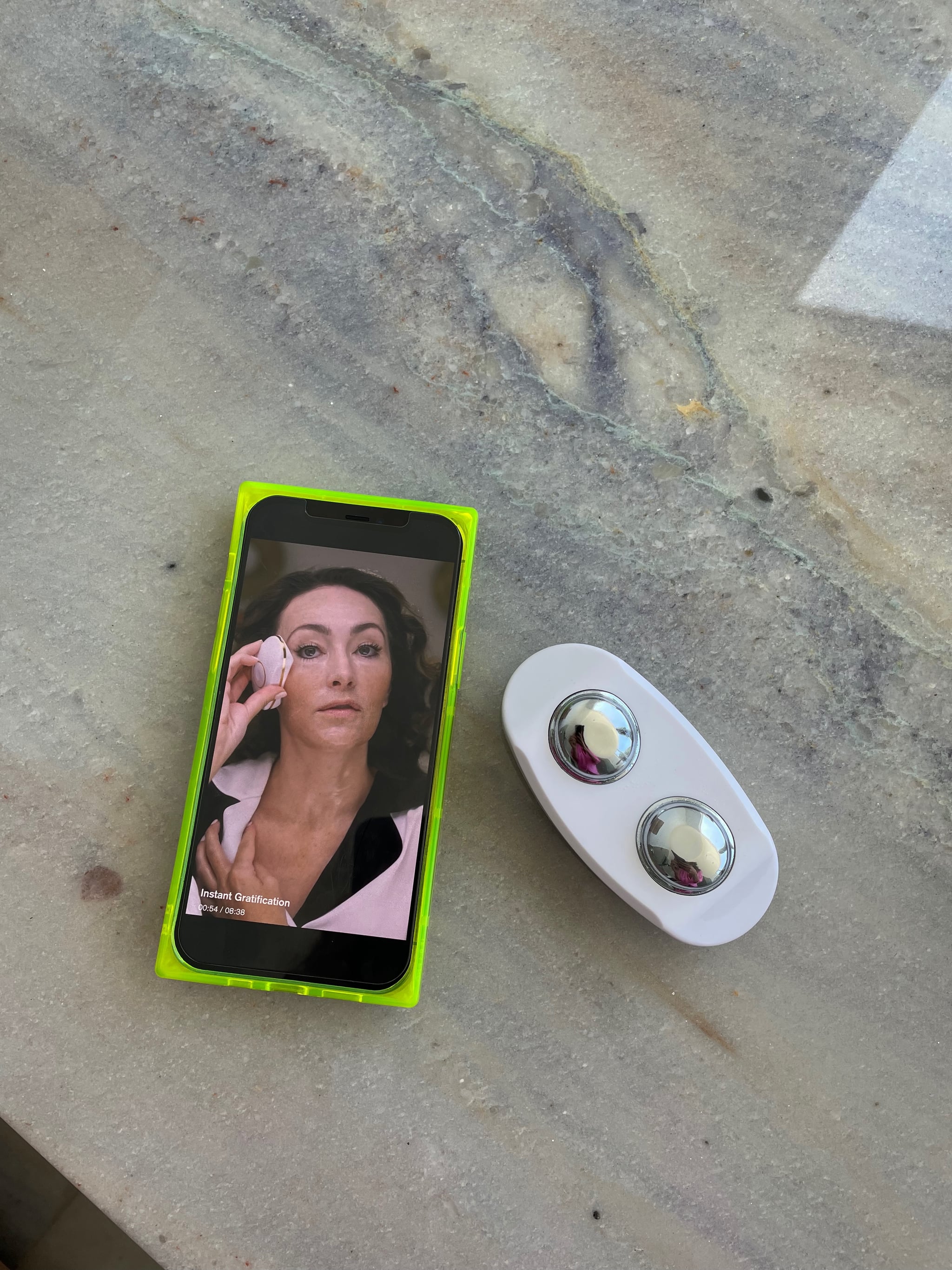- The Ziip GX facial toning device is loved by celebrities and skin-care fans alike.
- The tool promises to visibly lift the skin and help acne in just a few uses.
- Our editor put the skin-care device to the test and is sharing her results.
As I’ve gotten older, I’ve come to accept the fact that topical skin-care products may no longer be enough to fight gravity and clear my skin of blemishes. So while I’m willing to try most things to make my skin look better, I’m shy when it comes to in-office treatments like Botox, filler, or plastic surgery. I prefer to take the least-invasive route whenever possible, so when I started seeing microcurrent devices everywhere, the idea of testing one out really appealed to me. When I heard about Ziip GX ($495), a device loved by celebrities like Elizabeth Olsen that was both user friendly and results driven, I knew I wanted to try it.
The Ziip is a facial toning device created by facialist Melanie Simon, who’s touched the skin of Jennifer Aniston, Mandy Moore, and many other celebrities. It uses both electrical microcurrent and nanocurrent to send electrical currents into your skin, which in turn can help promote collagen, treat acne, and fade hyperpigmentation. The tool itself looks similar to a futuristic computer mouse and is designed to be used between three to four times per week. Similar to any current-based device, consistency is key to seeing noticeable results. I decided to test it for a full month.
When I opened the package containing my Ziip device and took stock of what was inside, I found it also came with a full-size bottle of the Ziip Golden Gel (a conductive gel that needs to be applied to the face prior to using the device), a black zippered case for the device, a cleaning cloth for the device, and a charger.
Getting started with the Ziip on a regular basis was easy. What makes Ziip different (and better, IMO) than other electrical-current devices on the market is that it connects via Bluetooth to an accompanying app that you can download onto your phone. The app features a menu of different treatments that target specific areas of the face or different skin concerns. You’re able to watch videos of Simon go through the treatment on your screen as you mirror her movements on your own face. There are 14 different treatments available, and they last between two and 12 minutes. You can also do multiple treatments in a row for optimal results.
Each time I wanted to use the device, I started by choosing a treatment on the app. Next, I slathered my face with the included Golden Gel, then followed along with the video and Simon’s movements as she illustrated exactly how to use the device. Using the gel was extremely important, and I found that if I didn’t use enough gel on my face when going through certain treatments, I could feel the current zapping my face. Although it wasn’t painful, it wasn’t exactly comfortable. I would caution against using the Ziip without any gel.

I used the Ziip six nights a week for five weeks, and I cycled through different treatments depending on what my skin needed most that day. If I was running short on time, I chose something quick and easy, like the “Founders Favorite” treatment, which is entirely nanocurrent and a treatment I barely felt but could definitely see results after using. If I wanted a treatment that would showcase noticeable results in just a few minutes, I opted for the “Instant Gratification” treatment, which only takes six minutes to complete.
Although this tool is most often praised for its ability to noticeably tighten skin, the benefits I noticed most were from the “Problem Solver” treatment, which is geared toward treating acne. I distinctly remember one night when I had a huge under-the-skin zit I could feel on my chin, and for the next two nights, I dutifully used the Problem Solver treatment. By the third night, the pimple had completely disappeared — before it was ever able to break through the skin.

In addition to helping clear my breakouts, I also noticed a difference in my overall skin health. My skin looked more lifted and sculpted, and while I was still nowhere near looking like a supermodel, the difference was definitely there. Another plus? The device has absolutely no downtime, which meant I was able to use it right before bed or right before leaving the house — there were no weird side effects like redness to worry about.
At almost $500, this facial tool isn’t cheap. However, when you consider the fact that the average cost of an in-office microcurrent facial can run you anywhere between $200 to $500, the tool essentially pays for itself after just one or two uses. If it’s within your budget, and you’re serious about maintaining healthy skin, I can’t recommend this product enough.
Rating:

Source: Read Full Article


